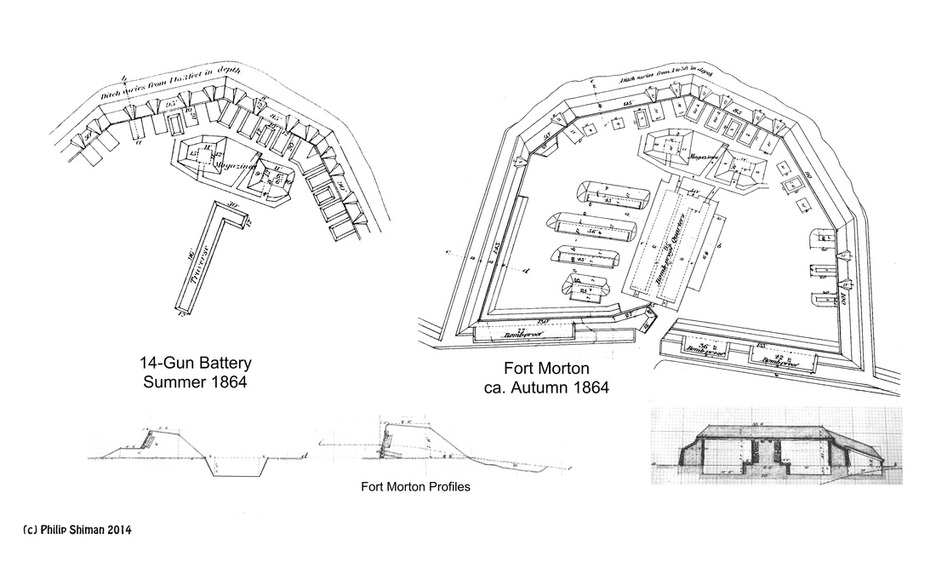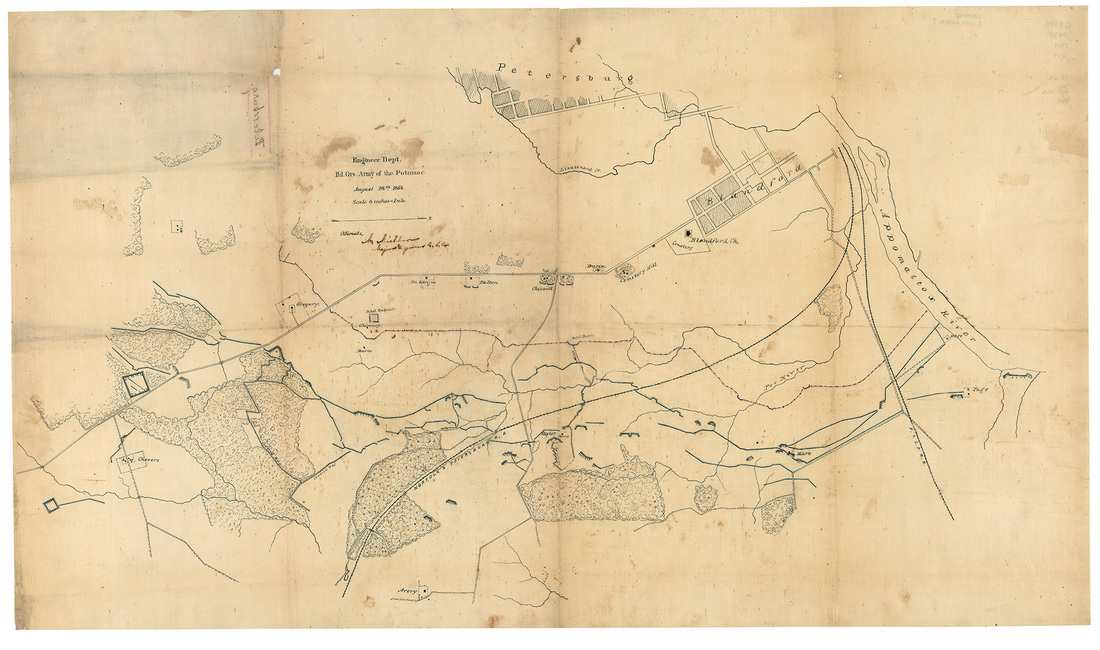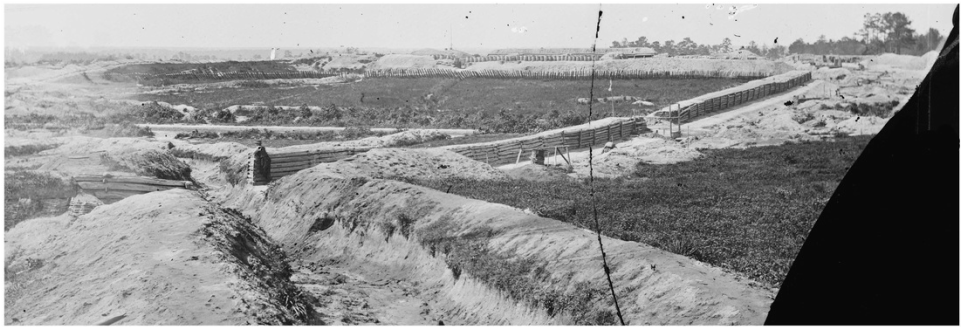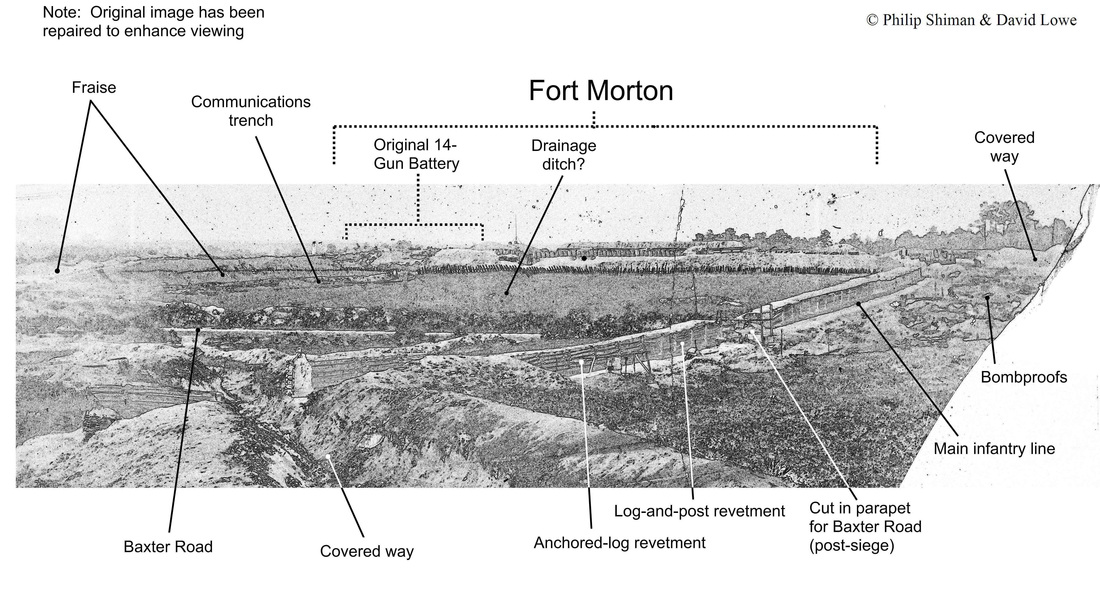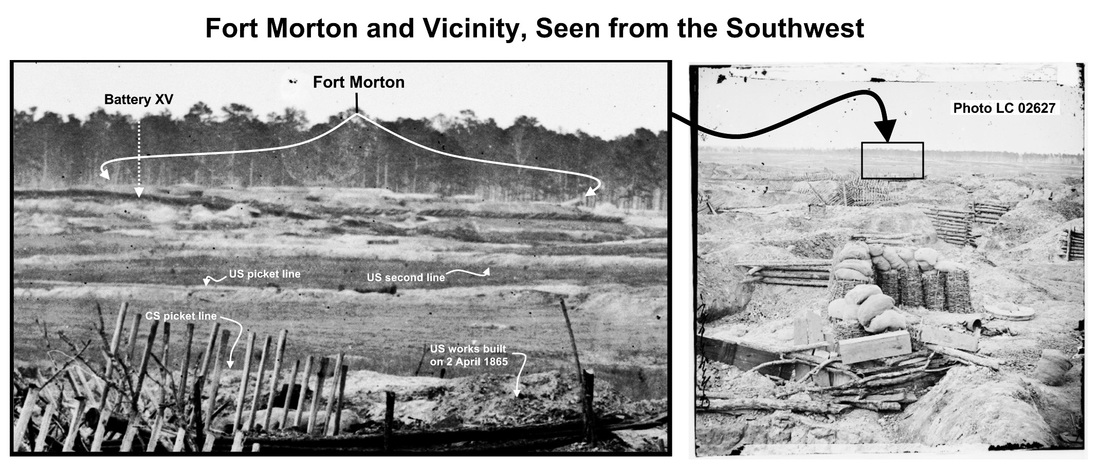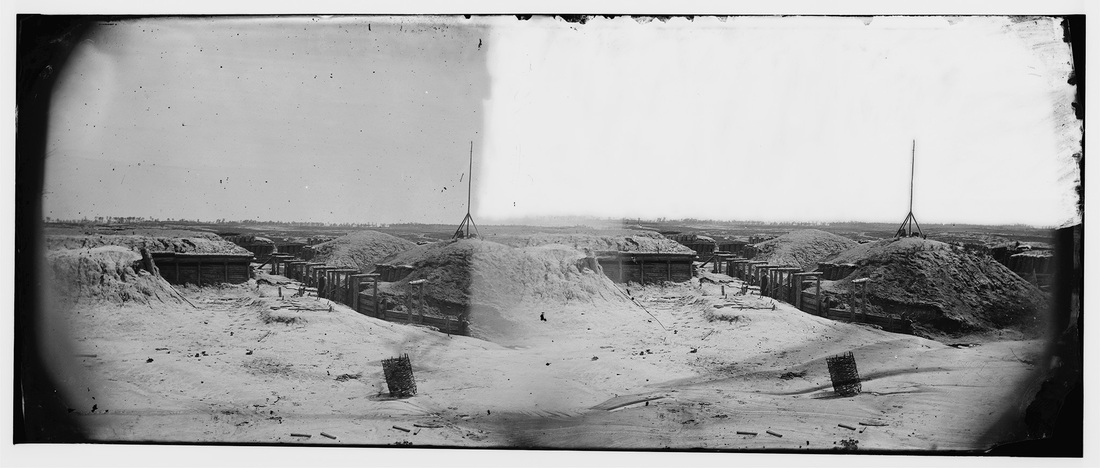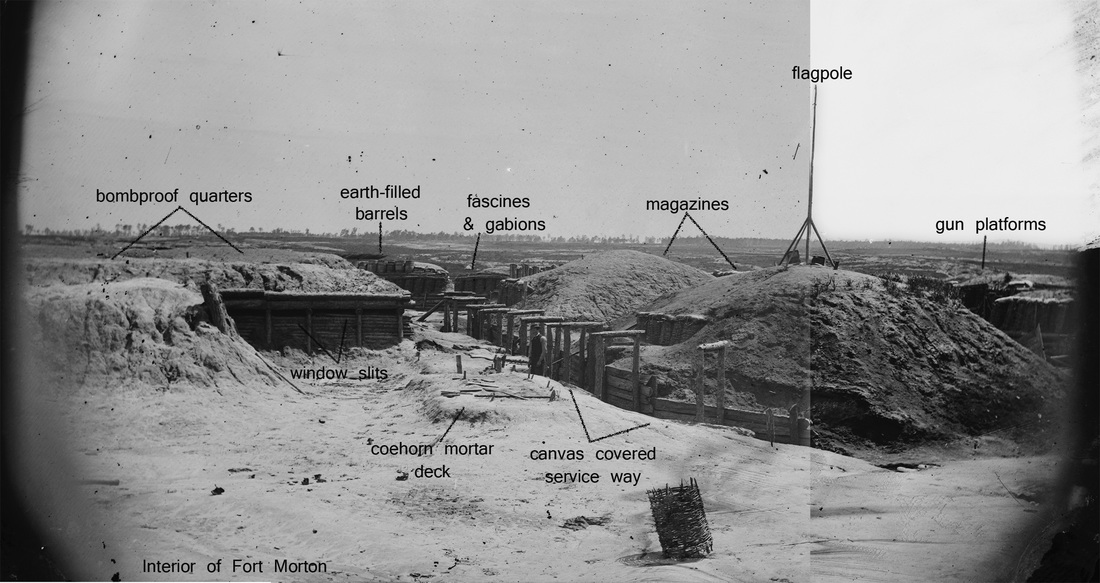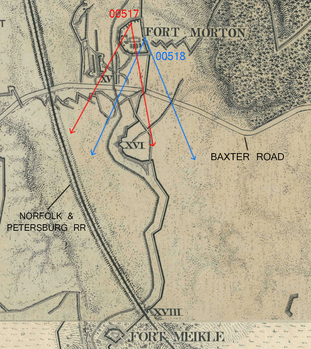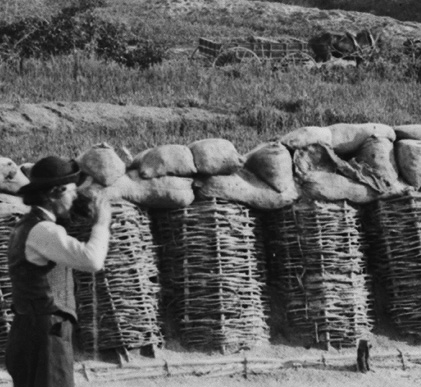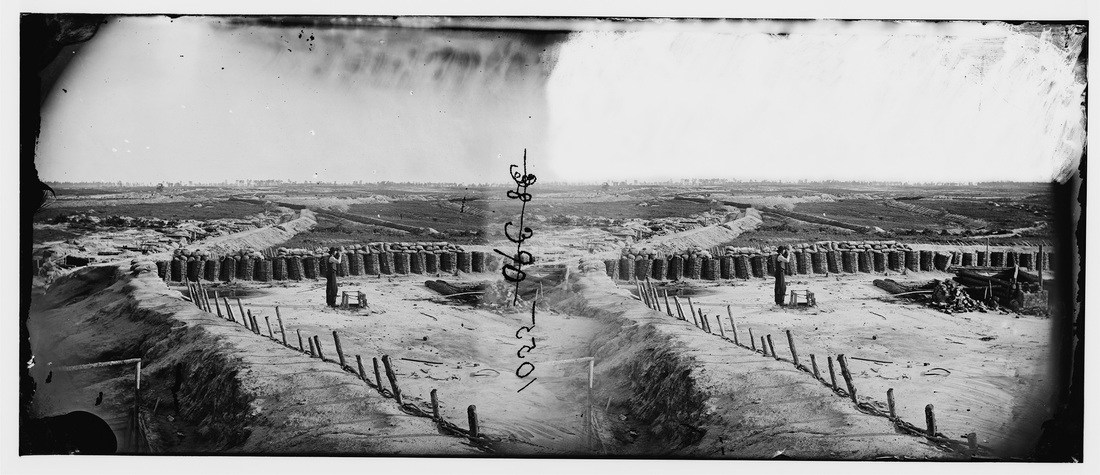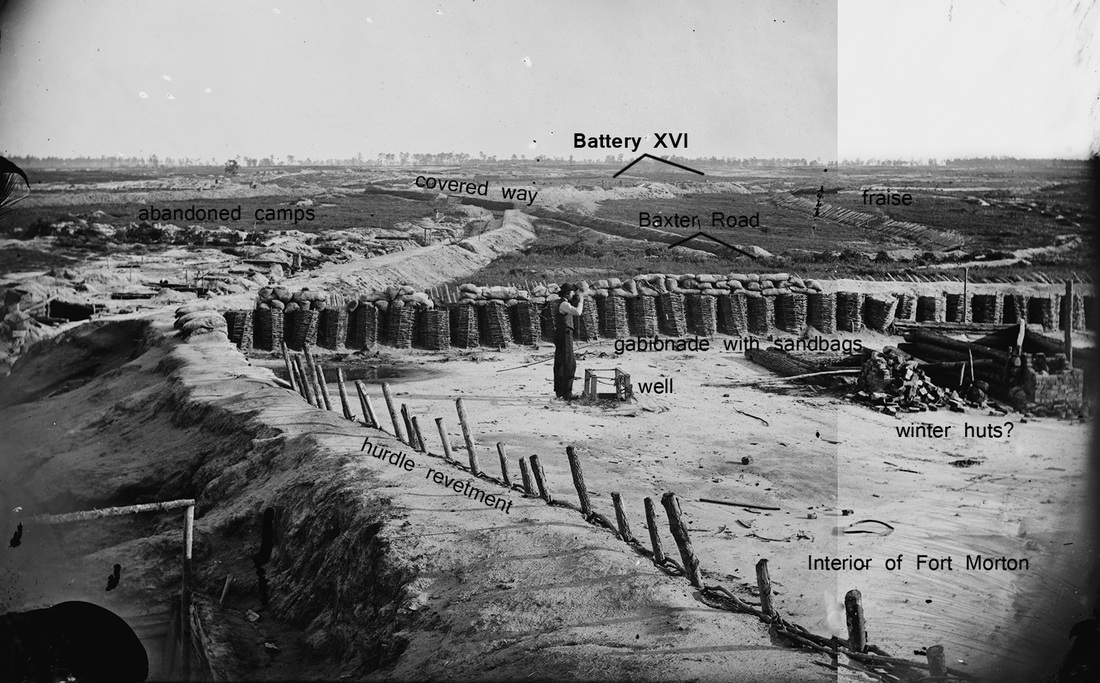Fort Morton
Fort Morton evolved into an enclosed fort from a 14-gun battery built on the Taylor Farm opposite Confederate Elliott's Salient. From here, on July 30, 1864, Maj. Gen. Ambrose Burnside and his staff observed the explosion of the Mine beneath Pegram's Battery and the failure of the subsequent attack.
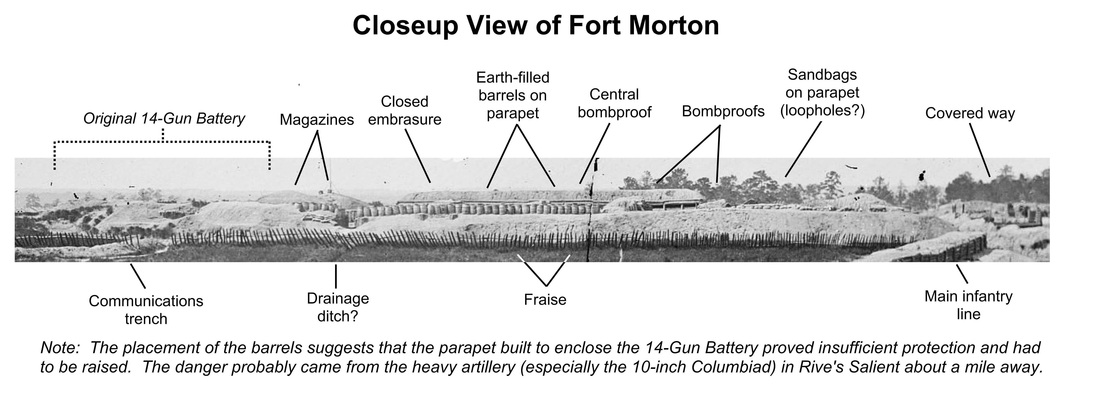
This detail demonstrates the substantial changes made to the Federal siegeworks in the fall of 1864. The open 14-gun battery on the left was conceived merely as a gun platform to concentrate and deliver artillery fire. Enclosed for all around defense, Fort Morton occupied and dominated the ground. As far as the Confederates were concerned, Morton was invincible. Federal engineering at its finest.

